COVID-19 by the Numbers
One thing I hear bandied about with COVID-19, specifically related to the stay-at-hope orders that have been in effect, is that “lots of other things kill more people than this and we don't shut things down for them.”
Ok then, I’m open to new information, so let’s look at the data and see how things are going.
Below is a chart showing the top 10 causes of death in the US in 2019 compared to the current death toll of COVID-19.
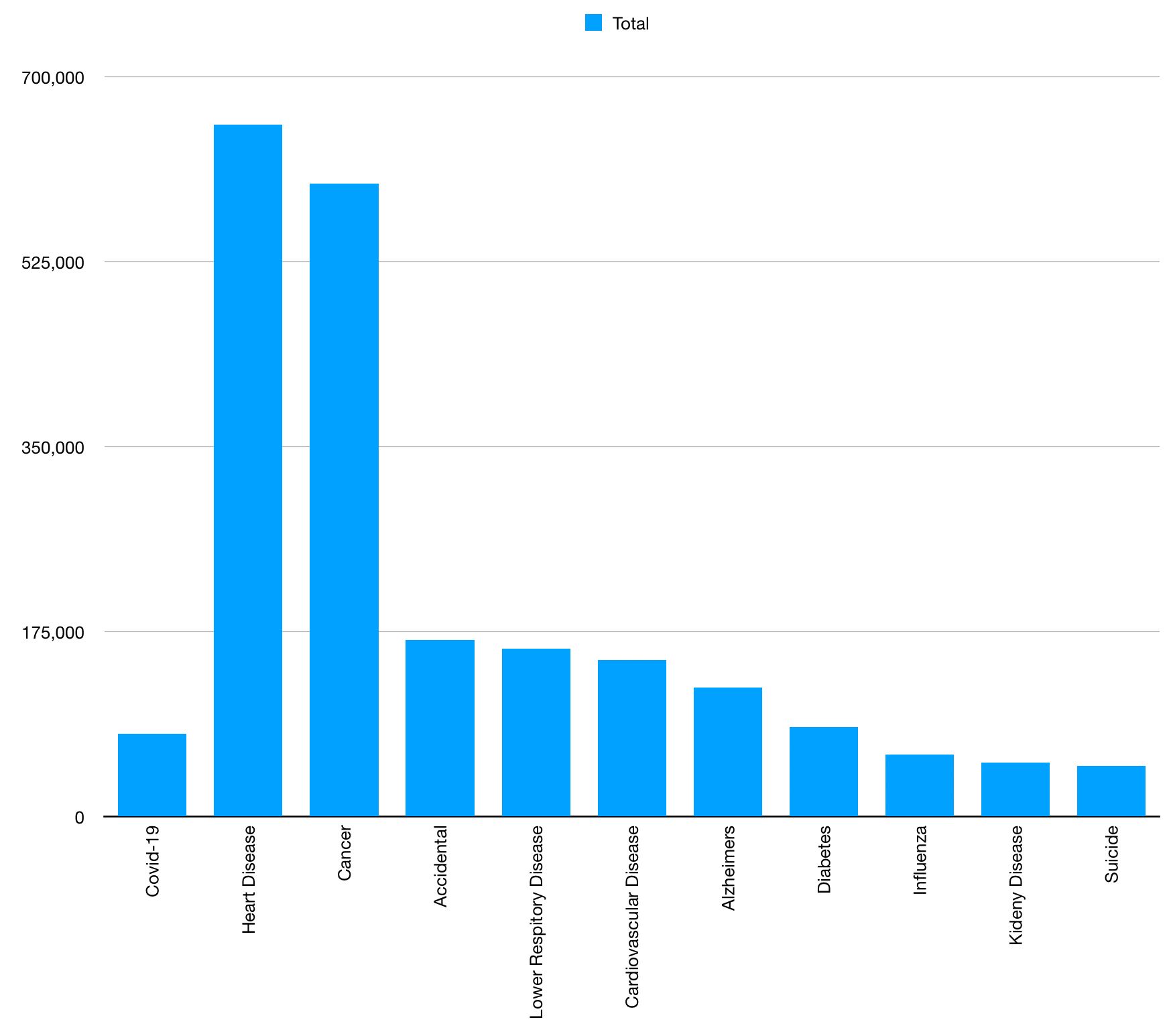
This chart makes it look pretty good for the “this doesn't kill that many people” crowd. But you're probably ahead of me here: this is comparing 12 months of deaths to 2 months of COVID deaths. So let's show 2 months’ worth of deaths instead.
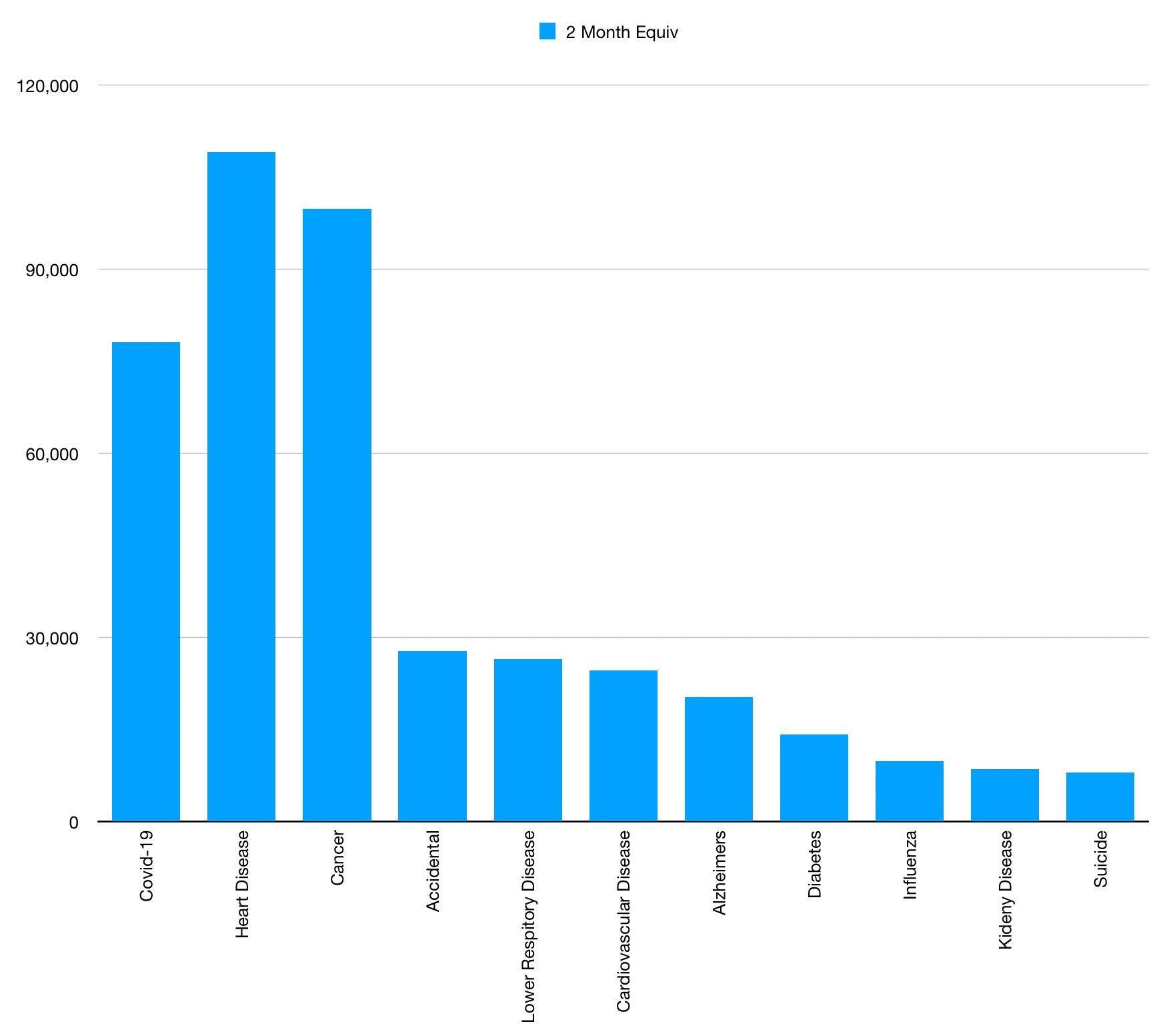
Okay, so this doesn't look as good. So over an average 2 months, cardiovascular disease and cancer still kill more people, but it's pretty close. What if today we learned that you can catch heart disease from someone else just by sharing the same space, and we don't know who has it or not? And if you get it, there’s a small chance you will die from it within weeks. Would you go to a baseball game tomorrow?
Over the last two months, this virus has become the #3 cause of death in the US. But even that doesn't tell the full story. The death toll was slow to grow in March. If we look at just the last 30 days, over 60,0000 people have died.
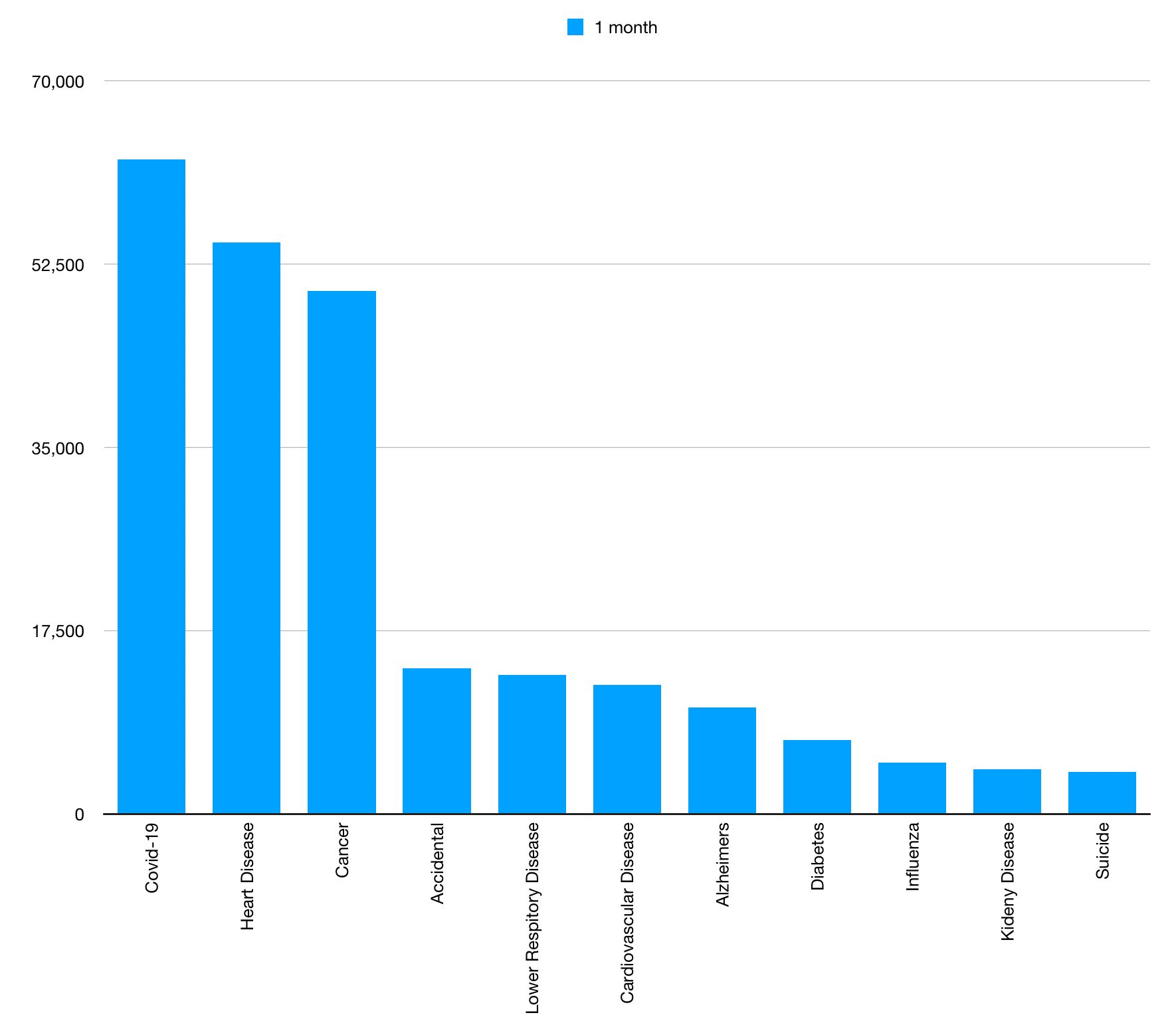
For some more perspective, 2017 saw a high of 70,237 deaths from the opioid epidemic, or the same number of people to die from COVID-19 in the past 45 days (aka 21x faster than the opioid crisis at its worst).
Finally, we’ve been looking at a lot of charts lately showing that we’re flattening the curve, and that’s great, slowing the infection rate is hugely important. But I also worry that these charts give people the impression, unintended as it may be, that things have leveled off and we’ve effectively “handled” this thing. Here’s the daily death count since the first reported death on February 29:
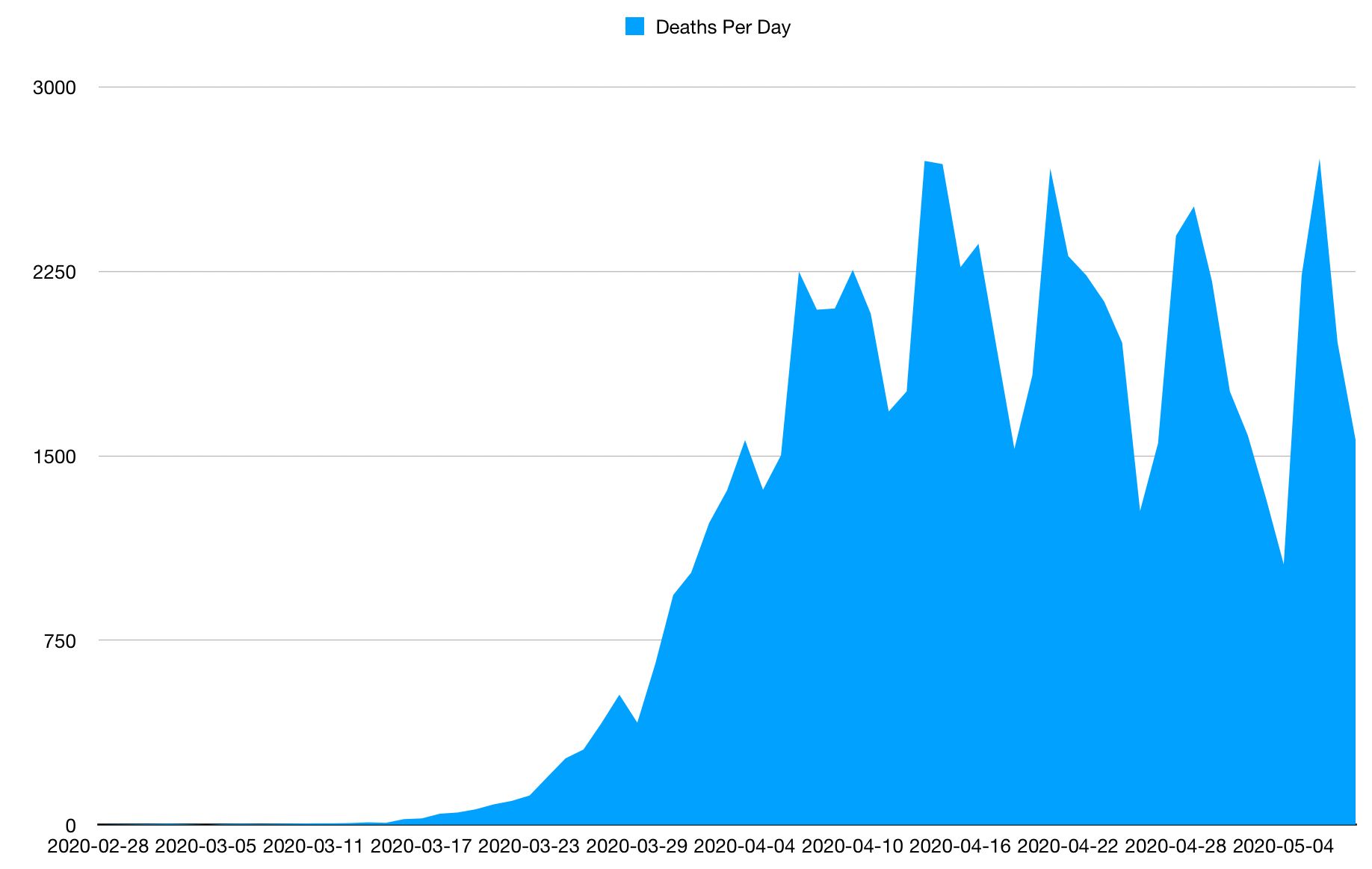
And here’s the cumulative deaths since then:
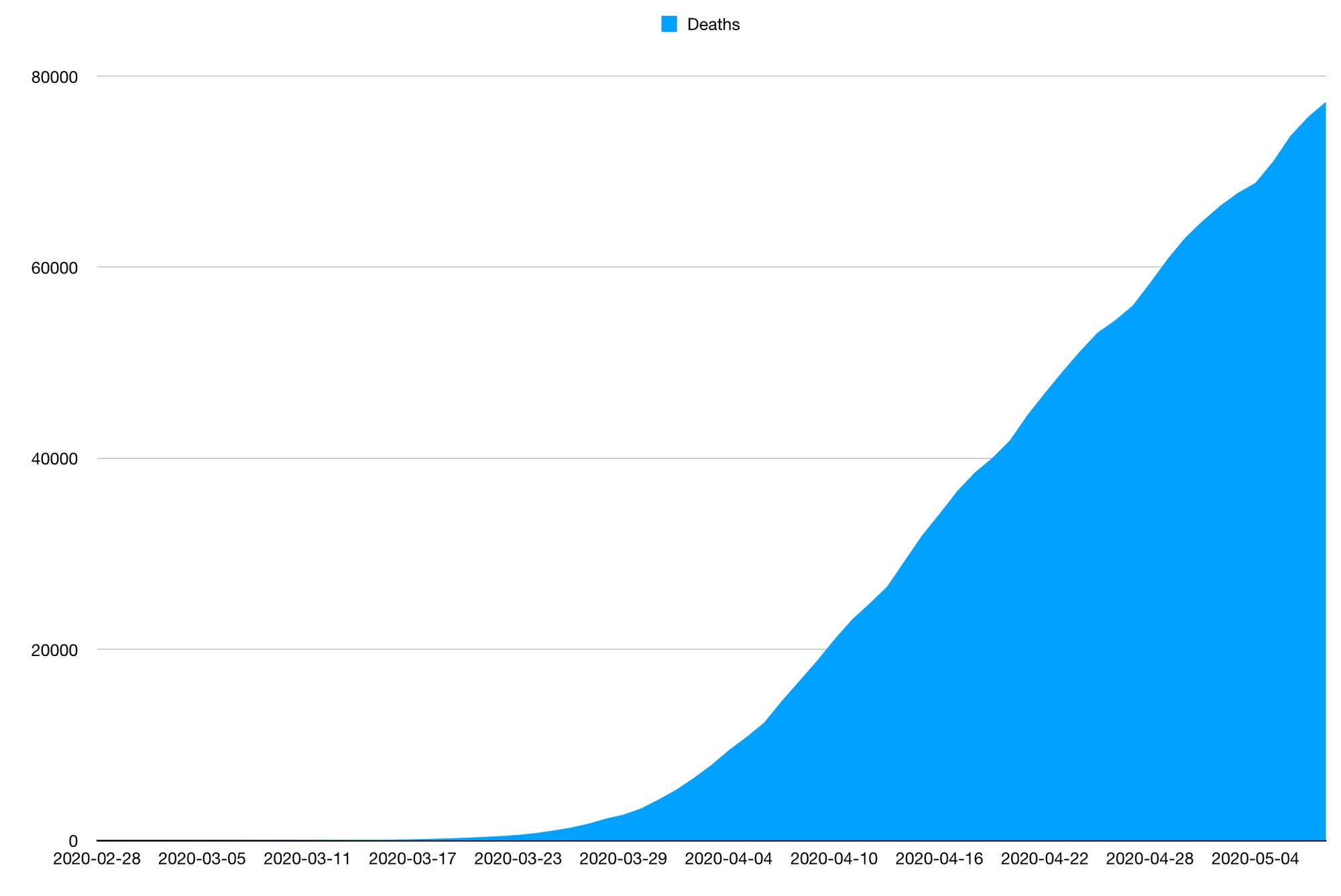
To be clear, even with all these preventative measures in place, the American death toll is still going up relatively consistently, and while we can argue about how much worse it will get if we all just go back to normal, we can agree it will go up some amount.
Takeaway
I think that saying we need to get back to work and stop all these precautions immediately is more crazy than before I ran the numbers. Even with us staying at home most of the time and doing everything we can to avoid each other to slow the spread, what we have accomplished so far is making this only the number one thing killing Americans.
Again, this is something we don’t have a cure for and is something that kills in days or weeks, not decades. Also, and I can not stress the importance of this enough, this is something that is contagious, and you could give it to someone else even if you don’t know you have it. If I have cancer, I can get a haircut without giving it to you. You can’t catch Alzheimer's or diabetes from me just by touching the payment terminal at Target. Almost all of the leading causes of death in the US are things that I can not get from being in the same space as someone else who has them.
I think the financial pain millions of people are feeling is a travesty and we need to do things to keep people afloat right now, but I think people who suggest we just need to get back to work now are falling pray to the “when you’re a hammer, everything looks like a nail” phenomenon. We need to help our fellow Americans get through these hard times, but I believe the 22% of people who think this thing is going back to normal in a matter of weeks are deluding themselves about what we’re dealing with and they don’t know what to do, so they’re sprinkling some capitalism on the problem since they think that solves everything.


